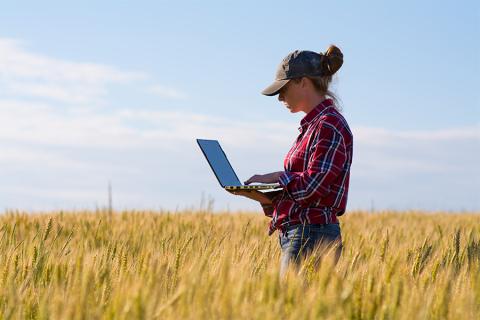Greenhouse gas accounts
Keeping a GHG account means quantifying GHG emissions and carbon stored. A farmer or land manager keeping an account solely for their own purposes can choose any suitable approach. However, if they keep an account to participate in a program (such as the ACCU Scheme), they will need to use the program’s specified approach for their calculations. These approaches may differ from whole-of-farm calculators such as GAF calculators. Program-specific approaches can include:
- the applicable scheme’s eligibility requirements
- the emissions sources and carbon stores to be included
- the monitoring and measurement tools and methods (such as for remote sensing and soil sampling and analysis)
- the calculator and tools to estimate quantities of GHGs emitted and carbon stored; calculators are custom-made software, or spreadsheets, usually in Microsoft® Excel®
- the frequency of estimates, to track changes over time
- reporting and verification standards.
The 2 main Australian Government initiatives with requirements for estimating or calculating GHG emissions and/or carbon stored are:
- the ACCU Scheme, administered by the Clean Energy Regulator, the statutory body that administers initiatives legislated by the Australian Government for measuring, managing, reducing and offsetting Australia's GHG emissions
- the Australian Government’s Climate Active program, administered by DCCEEW, which encourages business decarbonisation by certifying voluntary climate action.
Topic 2 examined the co-benefits of carbon farming for a farmer or land manager, the environment and the community. Accounting for co-benefits is in its infancy, but it is maturing as governments and an environmentally conscious public want to know the cultural, environmental and social impacts of farming and land management. Examples of accounting for co-benefits include:
- the Queensland Government’s Land Restoration Fund, which requires projects to follow a specified carbon storage method and deliver at least one environmental co-benefit, with the option of including social and/or First Nations peoples' co-benefits, as explained in its LRF Co-benefits Standard (PDF 2.1 MB)
- the Western Australian Government’s Carbon Farming and Land Restoration Program’s Co-benefits Standard 2022-2023 (PDF 1 MB), which outlines eligible co-benefits with examples, data and guidance about monitoring and reporting and a CF-LRP Co-benefits Portal, a digital mapping tool for applicants to identify co-benefits
- the Aboriginal Carbon Foundation's Core Benefits Verification Framework for the Environmental, Social and Cultural Values of Aboriginal Carbon Farming for determining values for benefits in First Nations carbon market projects.
A GHG account can help a farmer or land manager to:
- baseline their GHG emissions and changes in carbon storage, to help in identifying emissions reduction and carbon storage options and to set benchmarks for monitoring their emissions profile over time
- track and report on emissions reductions and carbon storage in an ACCU Scheme project if the GHG accounting is done in line with the specified method for the project
- achieve and maintain Climate Active certification for voluntary climate action
- provide evidence (when prepared within a suitable framework) to consumers, retailers, lower-interest sustainability loan providers and others who are interested in the carbon footprint of your product or business
- quantify productivity improvements and other carbon farming co-benefits
- use the data generated to work with regional natural resource management (NRM) organisations to reduce GHG emissions and store carbon at the landscape scale.
If selling produce internationally, farmers may need GHG accounts to demonstrate their emissions management credentials.

